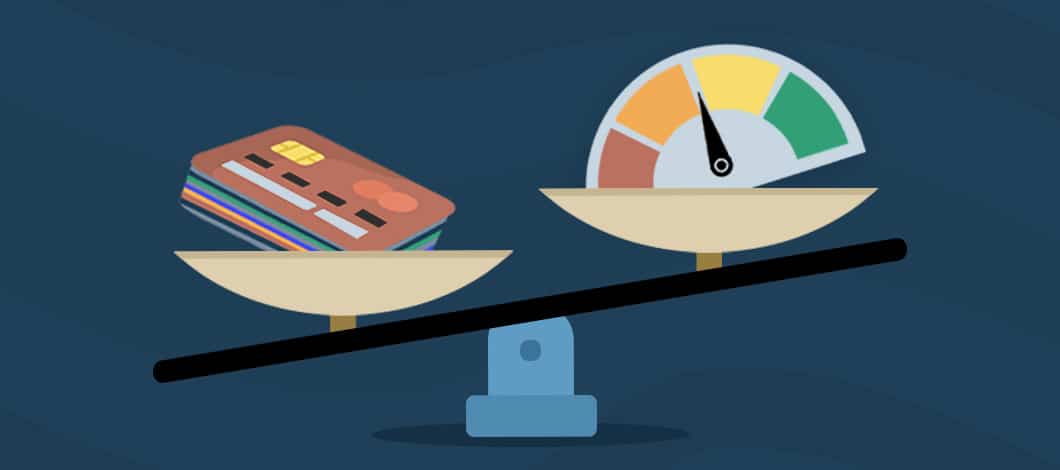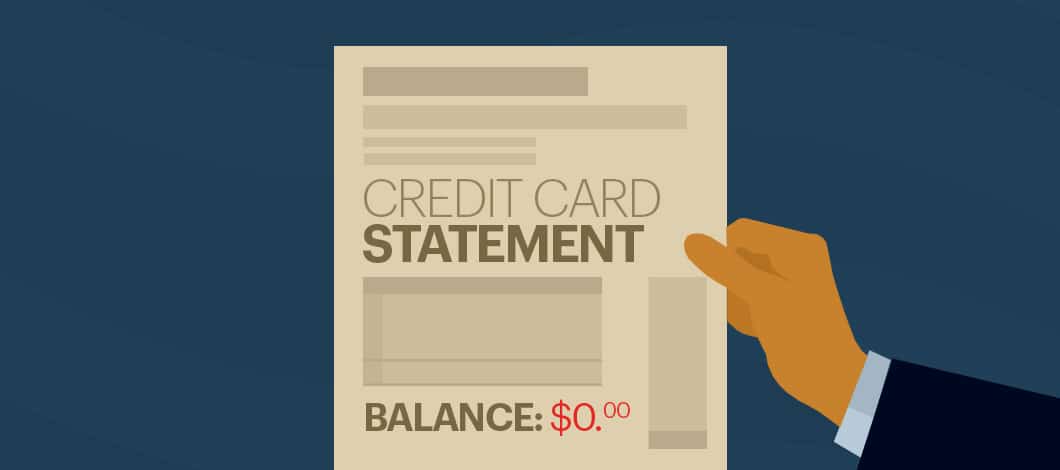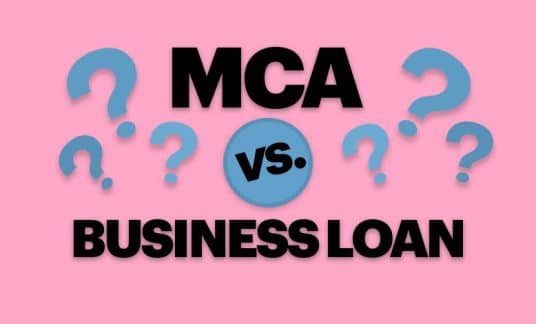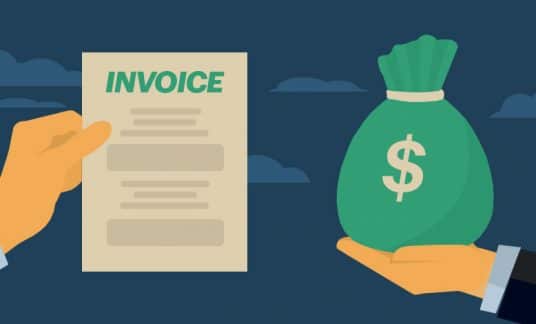For small business owners, business credit cards can provide a bunch of financial freedom.
For one, they enable owners and their employees to make routine purchases with convenience and ease. Thinking long-term, ongoing, responsible credit card use is key to building up a business credit score and overall credit history.
The key word in that last sentence: Responsible.
Keeping your credit card utilization rate down is a core tenet of responsible credit card use. Let’s look at how to lower credit utilization for small businesses.
What Is a Credit Card Utilization Rate?
A credit card utilization ratio refers to the total amount of credit card debt you owe compared to your total maximum credit limit.
The formula for credit card utilization rate is:
[(Total credit card debt) / (Combined limit of all credit accounts)] x 100
Say you have 3 credit cards:
- Card A has a credit limit of $100,000
- B has a credit limit of $30,000
- C has a credit limit of $20,000
On each, you owe $15,000.
Your credit card utilization rate would then be:
[(15,000 + 15,000 + 15,000) / (100,000 + 30,000 + 20,000)] x 100
or
[45,000 / 150,000] x 100
Do the math and it comes out to 30% — which, as we’ll discuss, is a pretty decent spot to be in.
A Quick Note on Personal and Business Credit Card Utilization
As we’ve talked about in a previous post, a small business owner’s personal finances — including their personal credit card usage rates — can impact a company’s creditworthiness.
Similarly, much of the advice we’ll provide for lowering your credit utilization can apply to both your personal and business credit card accounts.
That said, we’ll still be looking at all this through a business-focused lens — even when addressing the personal side of your credit history.

Why Does Credit Utilization Matter?
Your credit card utilization rate matters for two key reasons.
It Impacts Your Company’s Buying Power and Financial Stability
Your credit utilization rate plays a huge role in determining the overall financial standing of your business.
Basically, the higher your credit usage rate, the less credit you’ll have available to use for purchases. If your available credit gets squeezed too thin, your credit cards may not be an option should disaster strike — forcing you to find other sources of financing while dealing with an emergency situation.
On the other hand, having full control over your credit utilization rate means you’ll always have some wiggle room should you need to increase your spending from time to time.
It Impacts Your Business Credit History
Although high credit utilization may not impact your business credit score (at least, not as much as it impacts personal credit scores), it may factor into your overall credit report.
Now, to be sure, this isn’t always the case. PAYDEX scores and reports, for example, focus more on a company’s credit card payment behaviors than their usage habits.
Still, if a lender has access to your entire credit history — and they see that your credit usage has gotten out of control — they might think twice about providing you with a much-needed business loan.
Overall, your credit utilization rate can impact your ability to maintain financial stability and secure additional funding for your business.
That said, it’s vital that you keep your credit card usage rates in good standing at all times.
What Is a Good Credit Utilization Rate?
OK, so what does “good standing” mean when it comes to credit card utilization?
Now, you might be thinking the answer would be “zero.”
(After all, if your credit card balances are at zero, wouldn’t that mean you’re pretty financially responsible?)
But, keeping your balances at zero by not using your cards does nothing to prove your creditworthiness. Even worse, it may appear to lenders that you’d haphazardly opened credit card accounts without even having a use for them.
In either case, lenders again may think twice about giving you a loan unless you can otherwise prove your overall financial responsibility.
OK, then: If “zero” isn’t the best credit utilization ratio … what is?
There’s no consensus on what the “perfect” credit card usage rate is. Generally speaking, most financial institutions say anywhere from 25% to 30% is considered reputable for small businesses.
Truth be told, the actual figure doesn’t matter all that much.
(As long as it’s in a respectable range, of course).
Rather, it’s more important that you’re able to stay in control of your credit utilization rate — and know exactly what to do to keep things even-keel.
How to Lower Your Credit Utilization Rate
Maintaining a low credit utilization rate will take some effort on your part.
Luckily, there’s more than one way to make it happen.
Such as…
1. Request a Credit Limit Increase
If you’re focused on decreasing your credit utilization ratio — and aren’t too concerned with the total amount of credit you owe — you might simply request an increase to your current credit limits.
This step may actually be necessary for small businesses that are just starting to build up their credit histories. For one, businesses with a lack of solid credit history typically receive lower credit limits to start with. As routine expenses increase with company growth, said teams will need higher credit limits to remain operational.
But:
You absolutely shouldn’t use a credit limit increase as a way to appear more financially stable than you are. And you should never rely solely on higher credit limits as a way to scale your business.
To be blunt, doing so can actually lead to even bigger financial woes for your business down the line.
2. Pay Down Large Credit Card Balances First
Once more, your business credit reports may show both the total amount of debt you owe and the amount you owe on each open account.
Unfortunately, this means that having just one nearly maxed-out credit account can be enough to turn lenders off — even if your overall credit usage rate is in good standing. So, when working on lowering your credit utilization rate, you’ll want to focus on your largest balances first and foremost.
In addition to evening things out on paper, paying off your larger credit card balances helps you avoid massive compounding interest charges — making it a no-brainer for business owners looking to pay down their debts.
3. Zero-Out Credit Card Balances Before the Reporting Date
If you’re in a comfortable enough situation where you can pay off your credit card balances entirely, every single month … do it.
But be sure to pay off your balances not just before your payment due date, but before your monthly statement’s closing date.
The reason?
The credit card company reports statements to the bureau once the closing date has passed — even if it’s before your payment’s due date. So, any credit you owe at the closing date will appear on your business credit report.
Basically, this means you’ll have a revolving credit utilization record on a month-by-month basis. Although this might not necessarily hurt your chances of securing loans in the future, knowing how to lower your revolving credit utilization can make it a complete nonissue.
4. Keep Your Credit Card Usage Rates Level
As we said earlier, you actually might not want to zero out all of your credit card accounts each month — and instead focus on keeping your usage rate to roughly 25%-30%.
Once you’ve gotten your credit limits to this level, you’ll then need to put measures in place to keep them there.
A few examples:
- Revisiting the expenses charged to each account on a regular basis
- Adjusting your plans for paying off each card moving forward
- Doing some cost/benefit analysis in terms of points and rewards
Generally speaking, it’s better to avoid making larger, out-of-the-ordinary purchases via credit card (as doing so will throw your plans off completely). If you absolutely must charge a larger purchase, paying at least some amount upfront can help you keep your credit usage to a minimum — while still getting the financial help you need.
5. Seek Additional Financing and Funding Options
Whether you’re looking to pay off your credit card debt, lower your credit utilization rate, increase your buying power — or all three — you have a number of options at your disposal.
In some cases, an additional credit card may be what’s needed. Not only will a new card increase your credit limit, but the right one will bring with it better terms, more useful rewards, and more overall value to your company.
(You might also consider transferring your current credit card balance to a new card to take advantage of introductory rates and other bonuses.)
Another key option is to take out a small business loan.
For example, if your goal is to pay off your credit card debts, a loan can allow you to consolidate these debts into one regular payment. It’s also the best option when looking to scale; again, relying solely on credit cards to help you scale will all but certainly lead to more financial difficulties than it’s worth.
A small business loan can provide the financial stability you need to grow your business. Fast Capital 360 is here to help you find the best loan for your business needs.
Apply online today.











